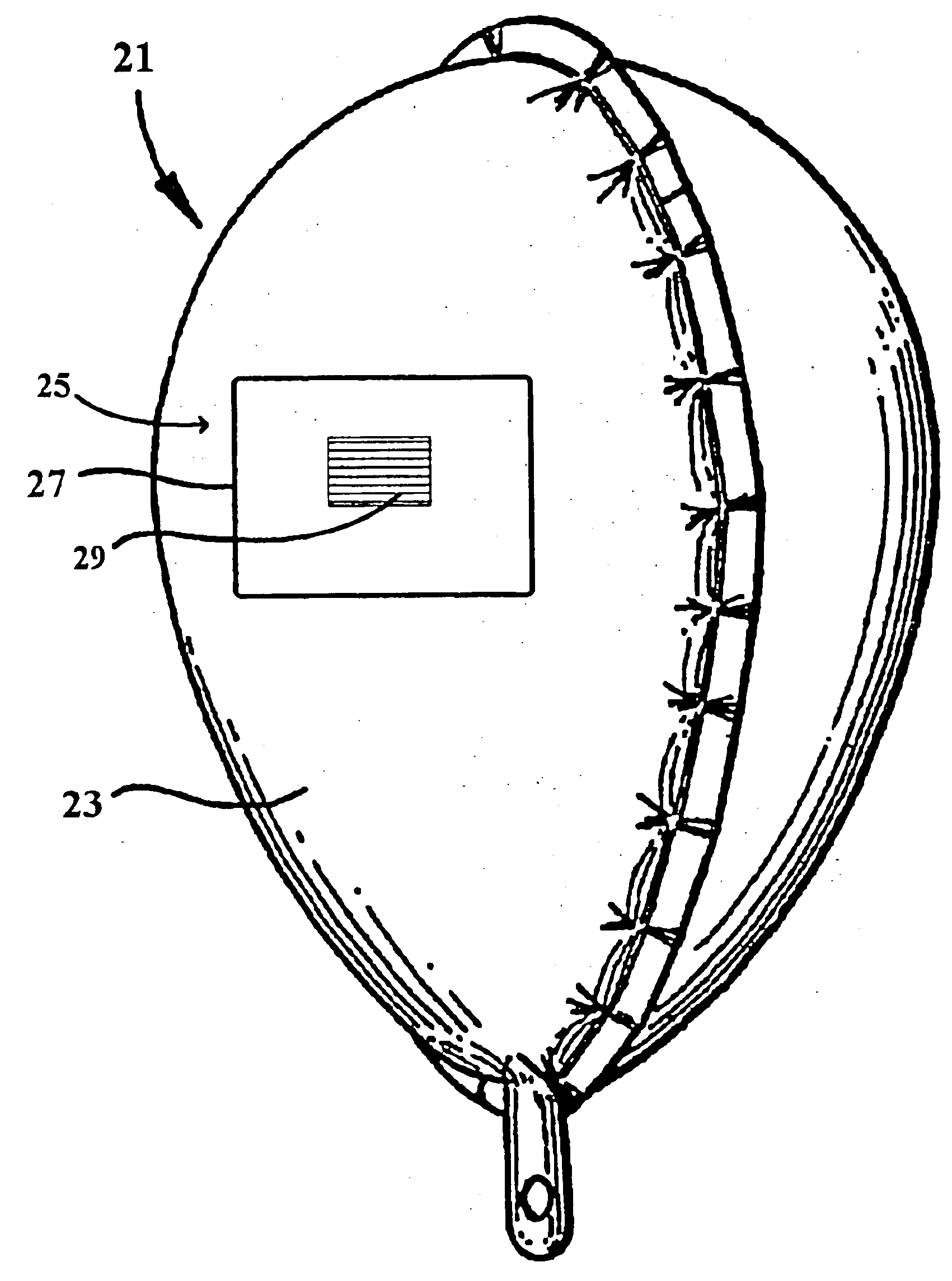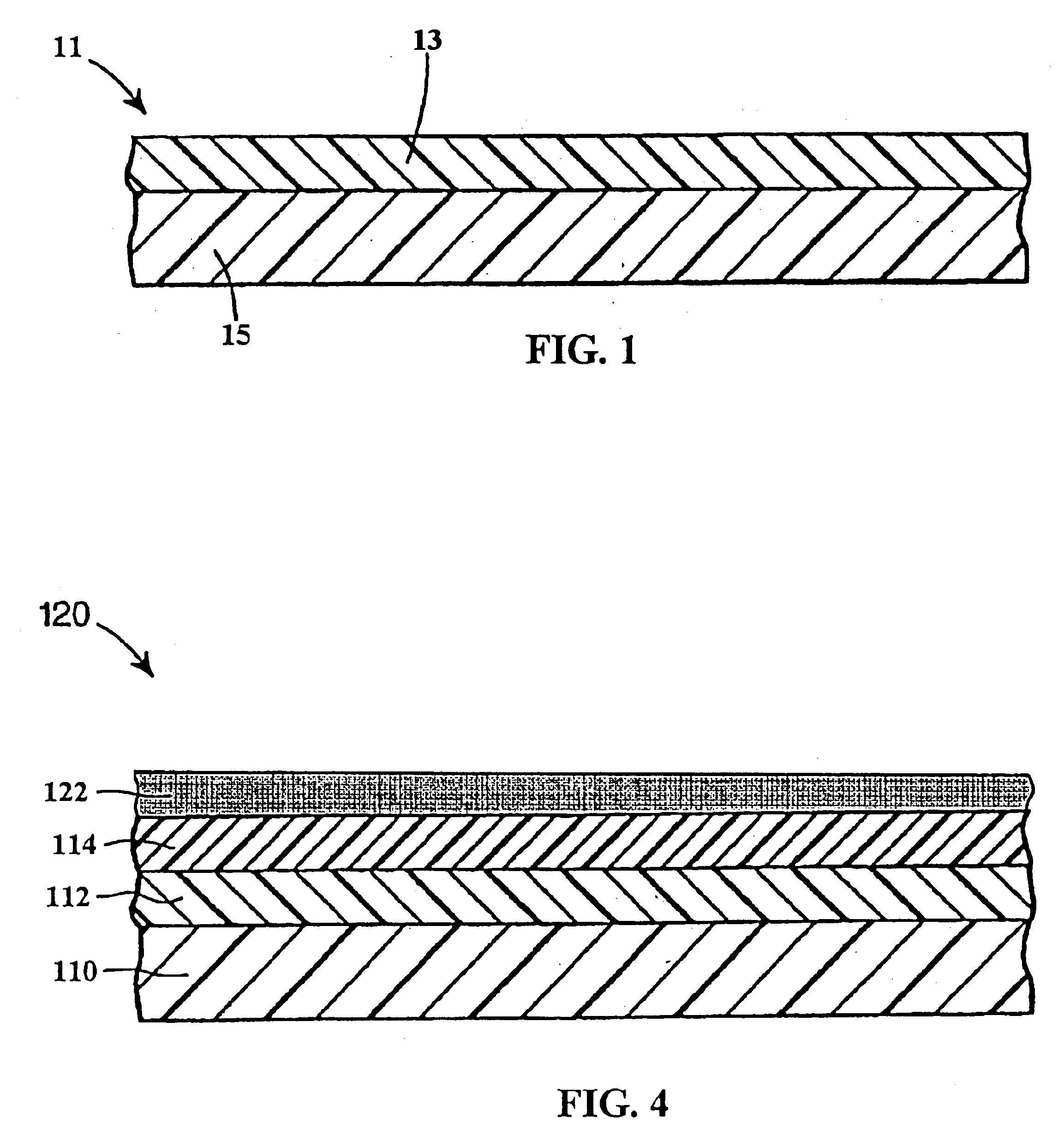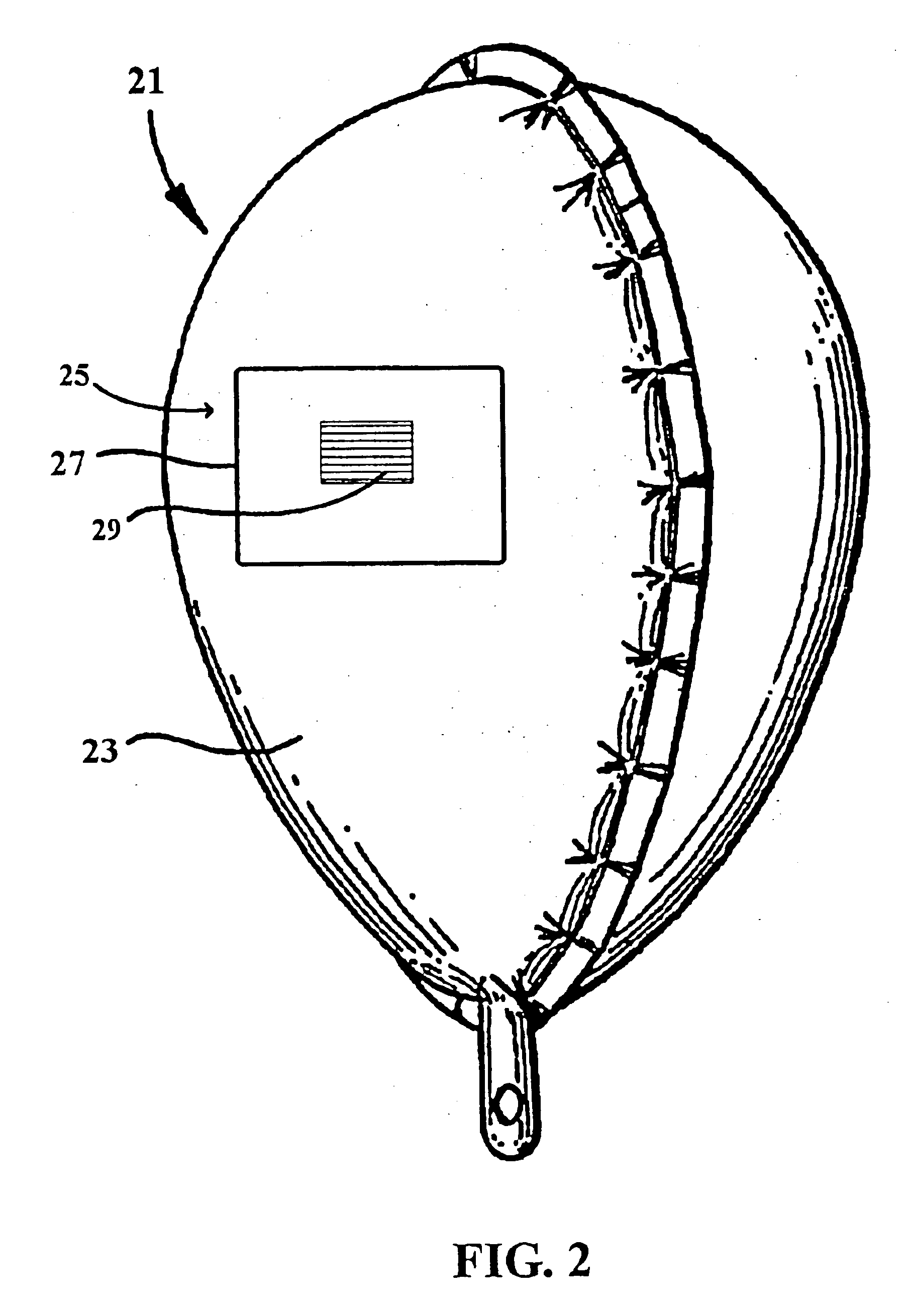Ink jet transfer printing process
- Summary
- Abstract
- Description
- Claims
- Application Information
AI Technical Summary
Benefits of technology
Problems solved by technology
Method used
Image
Examples
example 1
This example illustrates the preparation of an image transfer sheet in accordance with the present invention.
A solution of the following components was coated onto a temporary carrier sheet of 100 microns thick unprimed polyethylene terephthalate film and dried using blown air at 160° C. The coating weight of the dried layer was 10.7 g per square meter.
Coating composition (percent by weight):water 90%polyethylene oxide (200,000 molecular weight)0.8%hydroxypropylmethyl cellulose5.5%colloidal hydrated alumina2.4%sorbitol1.0%mordant10.3%1The mordant is the compound identified as P. 134-Cl in U.S. Pat. No. 5,342,688 (Kitchin et al.).
The adhesion of the dried coating to the polyethylene terephthalate was sufficient that the coating remaining adhered during normal handling, including cutting of the composite into 8.5×11 sheets, but the coating was readily removed as an into layer by application of a short length of 3M SCOTCH™ brand MAGIC™ tape to the surface of the coating, followed by r...
example 2
This example illustrates the preparation of an image receptive balloon.
An 18 inch diameter aluminized foil balloon, manufactured by Anagram International Inc. of Minneapolis, Minn. was laid out on a fist surface. An 8.5×11 inch rectangular sheet of 3M SCOTCH™ brand 9457 Hi-tack Acrylic laminating Adhesive was adhered to the exposed side of the balloon, using firm hand pressure. The releasable backing sheet was left in place covering the adhesive.
example 3
This example illustrates preparation and transfer of an image in accordance with the present invention.
An 8.5×11 inch sample of image transfer sheet, prepared as described above, was imaged on the ink absorptive layer side with a color test pattern using a Hewlett-Packard 2500C ink jet printer. The mirror image option was selected on the printer. The printed image was allowed to dry for five minutes. The releasable backing sheet was removed from the balloon of EXAMPLE 2. The image side of the image transfer sheet was pressed into contact with the adhesive patch on the balloon using firm hand pressure. The releasable backing sheet was then peeled away from the image and discarded. A high-quality image remained in place on the balloon.
PUM
| Property | Measurement | Unit |
|---|---|---|
| Weight | aaaaa | aaaaa |
| Pressure | aaaaa | aaaaa |
| Frequency | aaaaa | aaaaa |
Abstract
Description
Claims
Application Information
 Login to View More
Login to View More - R&D
- Intellectual Property
- Life Sciences
- Materials
- Tech Scout
- Unparalleled Data Quality
- Higher Quality Content
- 60% Fewer Hallucinations
Browse by: Latest US Patents, China's latest patents, Technical Efficacy Thesaurus, Application Domain, Technology Topic, Popular Technical Reports.
© 2025 PatSnap. All rights reserved.Legal|Privacy policy|Modern Slavery Act Transparency Statement|Sitemap|About US| Contact US: help@patsnap.com



